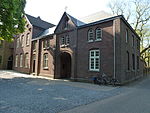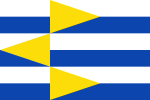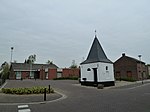Koningsbosch
Echt-SusterenPages with Dutch IPAPages with Limburgish IPAPopulated places in Limburg (Netherlands)

Koningsbosch (Dutch pronunciation: [ˈkoːnɪŋzbɔs], Limburgish: De Boesj [də ˈbuːʃ]) is a village within the municipality of Echt-Susteren, in the Dutch province of Limburg. Koningsbosch is located next to the German border, approximately 10 kilometres east of the town of Echt. The neighbourhood of Koningsbosch, which also includes the hamlets Echterbosch, Spaanshuisken, Aan Reijans and the surrounding countryside, covers an area of 0.27 km², has 1.711 inhabitants (as of 1 May 2005) and consists of some 700 houses. The village is slowly growing with the younger generation moving in and the recent construction of additional playgrounds and a community center.
Excerpt from the Wikipedia article Koningsbosch (License: CC BY-SA 3.0, Authors, Images).Koningsbosch
Haverterstraat, Echt-Susteren
Geographical coordinates (GPS) Address Nearby Places Show on map
Geographical coordinates (GPS)
| Latitude | Longitude |
|---|---|
| N 51.05 ° | E 5.95 ° |
Address
Haverterstraat 67
6104 AN Echt-Susteren
Limburg, Netherlands
Open on Google Maps









